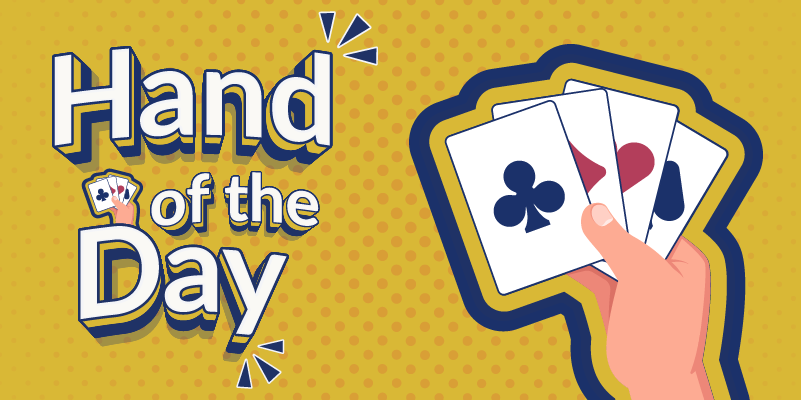Best Answer: ♥
Sitting West, against 4♠, you lead the ♣AK. All players follow with Clubs. What will you do next?
You can count everything if you pay attention to the hands here.
You can count partner's points and distribution if you look carefully at the bidding. Declarer opens 1NT which is 15-17 points, so they have, let's say, 15 points. You have 11. Dummy has 13. So total is 39. That means partner has 0-1 point.
You can also count the distribution. When South rebids 2♥ after stayman (4 hearts, and maybe 4 spades), then North rebids 3NT (4 spades and fewer than 4 hearts), South chooses to stop in 4♠ (as they have 4 spades). So Declarer is showing 4-4 in the majors.
If Declarer has 4 cards in Hearts and 4 cards in Spades, it means that partner has a singleton Heart and doubleton Spade (you can work this out by looking at your own hand and the bidding for dummy).
Here you've 3 sure tricks in your hand; ♠A and ♣AK. So, you need 1 more to set the contract down.
In this case, playing your singleton Diamond, in the hope of getting a Diamond ruff, won't work, given partner only has 0-1 point. They'll never get the hand to let you ruff a Diamond. You'd only succeed if Declarer played a 2nd diamond, and there'd be no sense in them doing that before pulling out the trumps.
The setting trick has to come from a Heart ruff. You know partner has only 1 Heart from the bidding. So, play Heart at trick 3. When the Declarer wins and pulls trumps, you need to win it immediately with the ♠A (to protect partner's 2nd Spade) and continue with a 2nd Heart for partner to ruff.
Note :
b. When North bids Stayman and later 3NT, it's clear North has Spades as they don’t support Hearts. With no majors, North would’ve bid 3NT directly, without using Stayman.
c. Don't always lead a singleton.
Best Answer: ♣ to the ♣A and then ♣Q.
Sitting South, you play 4♠.♥ K.♥ A and continues with the ♦ 9.♦ A. What will you do next?
Again, you can count everything here too.
From the bidding, we can see that opponents have 18 points and they should have at least 12 points in East and 6 in West.
Also, from the ♥ K lead, it's clear that West holds the ♥ KQ. As mentioned before, given East opened a bid, they should have at least 12 points, which means all the rest of the high honors (♥ A, ♣K and ♠A) are in East's hands.
As cards opened, we have 3 losers (assuming Spades are not 4-0), 2 Hearts and 1 Spade. But here, East’s play, which is overtaking and switching to Diamonds, indicates that they have a singleton in Diamonds. Therefore a Diamond ruff by opponents will set the contract.
If you play Spades (or Hearts), East will take the ♠A, continue with Hearts to West's ♥ Q and then a Diamond from West will let East ruff the setting trick.
To prevent this ruff, you need to "kill" their entries to West (prevent West getting the hand), by cutting communication between opponents. Therefore, play a Club to the ♣A and continue with the ♣Q, discarding a Heart when South covers with the ♣K. That loser on loser manoeuvre will keep East in hand and keep West away. Ruff the Heart return from East and play a Spade to the ♠J, losing to the ♠A. Then you can claim 10 tricks, losing 1 Spade, 1 Heart and 1 Club.
If you are human, leave this field blank.
Submit






On hand 4 not guaranteed that opening leader has !HQ, may have led top heart to retain lead and see dummy. But agree !CA, Q better than my line
3S Indeed - looks like 18 to me and he knows my shape and will focus on the Spade suit.and wasted D values.
Thank you. Excellent and well explained evaluations/analyses. Great teaching tool. I will watch for more.
Fully agree with Leslie.
Best of bbo articles (Quiz). I am a great fan of Oren.
Me too.
Give credit to Reese who named it the " Scissors Coup "
Very Good Hands
Impressed with analysis
Best Quizzes to lean
Excellent learning
enjoyed that !
Thank you made me think carefully
Great quiz.
I would have liked an option of 3S for hand 1, which I would have selected.